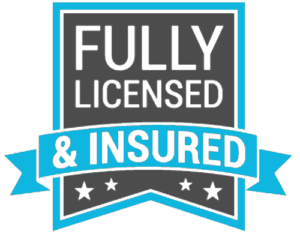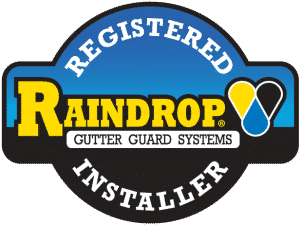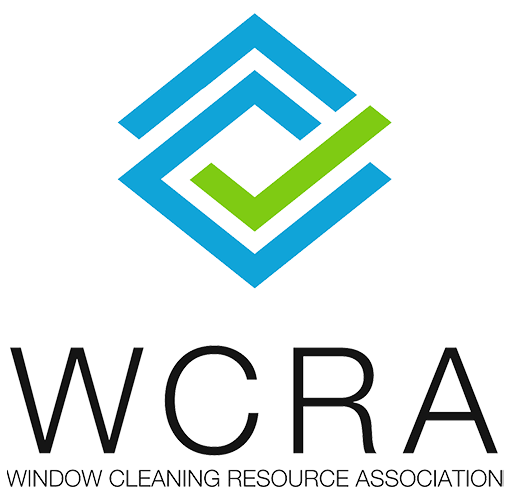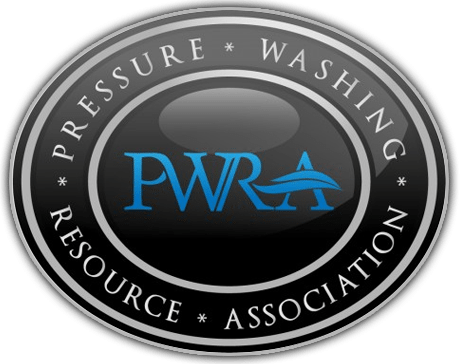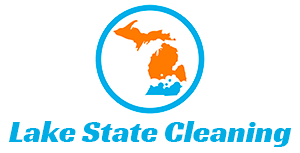As a homeowner, you know how important it is to keep your Michigan property in top-notch condition. While you may take great care of your lawn, garden, and interiors, have you ever thought about the state of your roof? Did you know that the average roof makes up over 40% of the visible surface of a home?
Your roof is one of the most crucial components of your home, protecting you and your family. And yet, it is often neglected and left to deteriorate over time. A dirty roof can really detract from an otherwise beautiful home. Periodic cleaning is an affordable, safe way to improve its appearance and extend its life. But with so many different types of roof shingles available, it can be tough to know which cleaning method is best for your specific roof.
This article will help you understand why roof cleaning is a smart investment in the long-term health and value of your home. We'll break down the different types of shingles, from asphalt to wood to metal, and provide expert tips on how to clean each one effectively. This guide has everything you need to keep your roof looking and functioning at its best for years to come. Let’s get started!
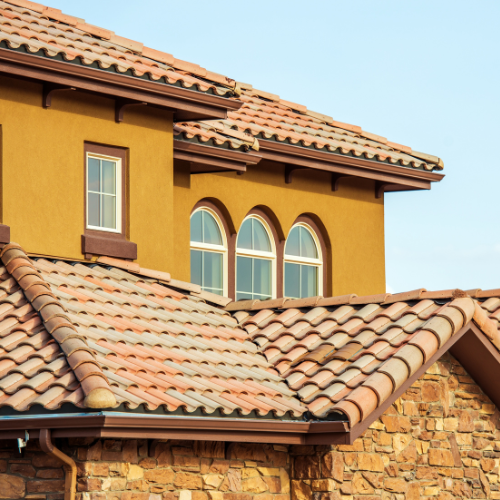
Different Types of Roof Shingles
There are several types of roof shingles available in the market, and each type has its own unique properties. Understanding the different types of shingles is crucial when it comes to maintaining and cleaning your roof. Here are some of the most common types of roof shingles:
Asphalt Shingles
Asphalt shingles are the most popular type of roofing material across North America. They are made of fiberglass mats coated with asphalt and ceramic granules. Let’s take a look at its pros and cons!
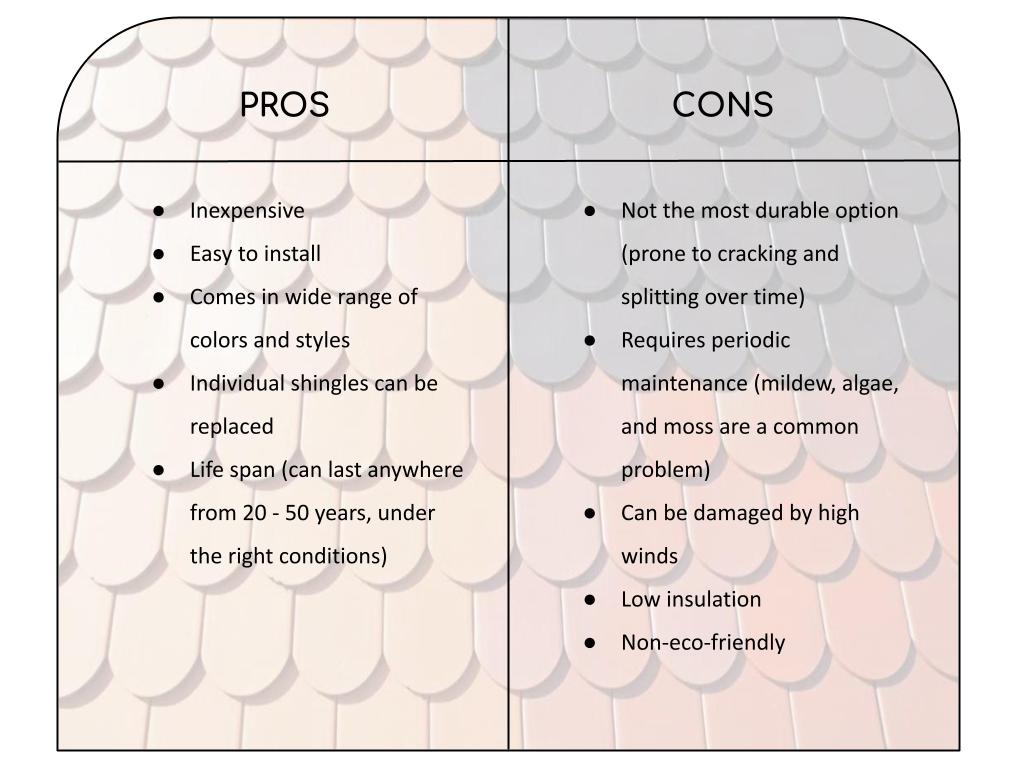
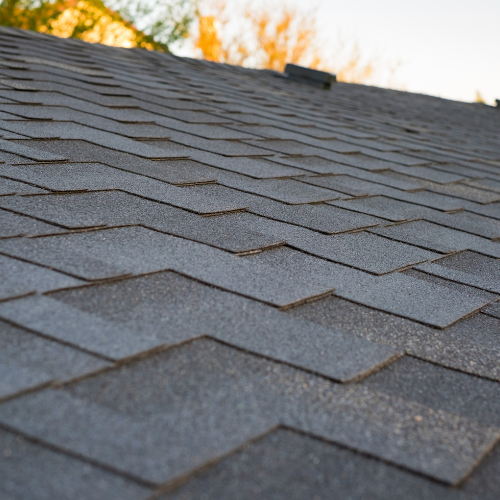
Wood Shingles
There are two types of wood roofing materials - wood shingles and wood shakes. Wood shingles are made from natural materials such as Cedar, Redwood, Oak, or Chestnut. They look smoother and uniform in appearance. Wood shakes, on the other hand, are thicker, and look rustic and natural. Let’s take a look at its pros and cons!
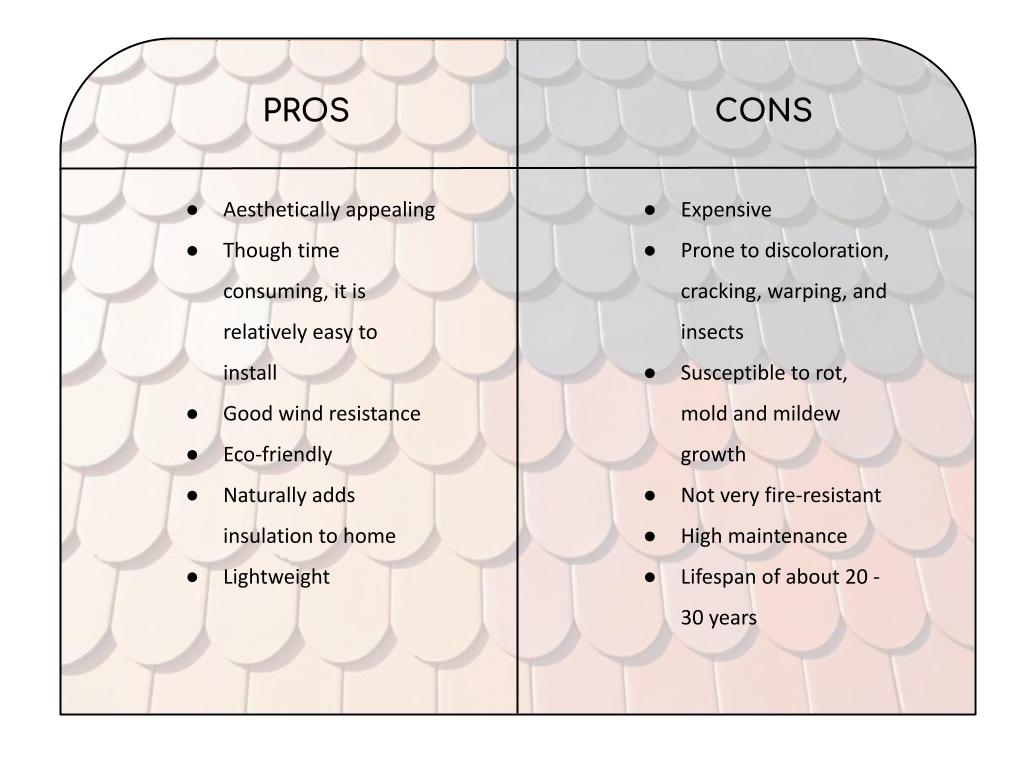
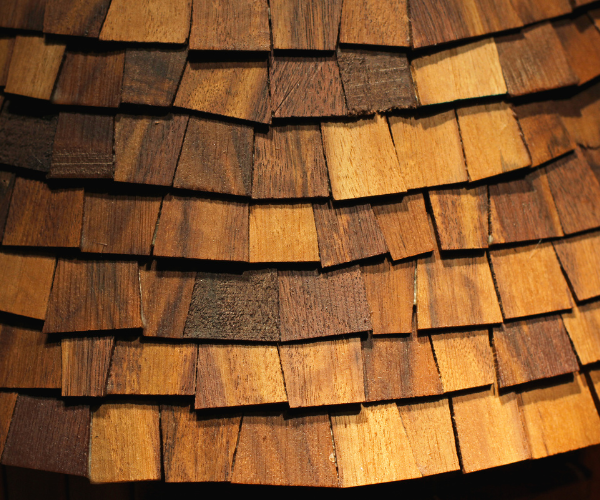
Metal Shingles
Metal shingles are made from stainless steel, aluminum, or copper. They carry the style of a traditional roof with the durability of metal. Metal has been used as a roofing material for residential and commercial properties for many years. Let’s take a look at its pros and cons!
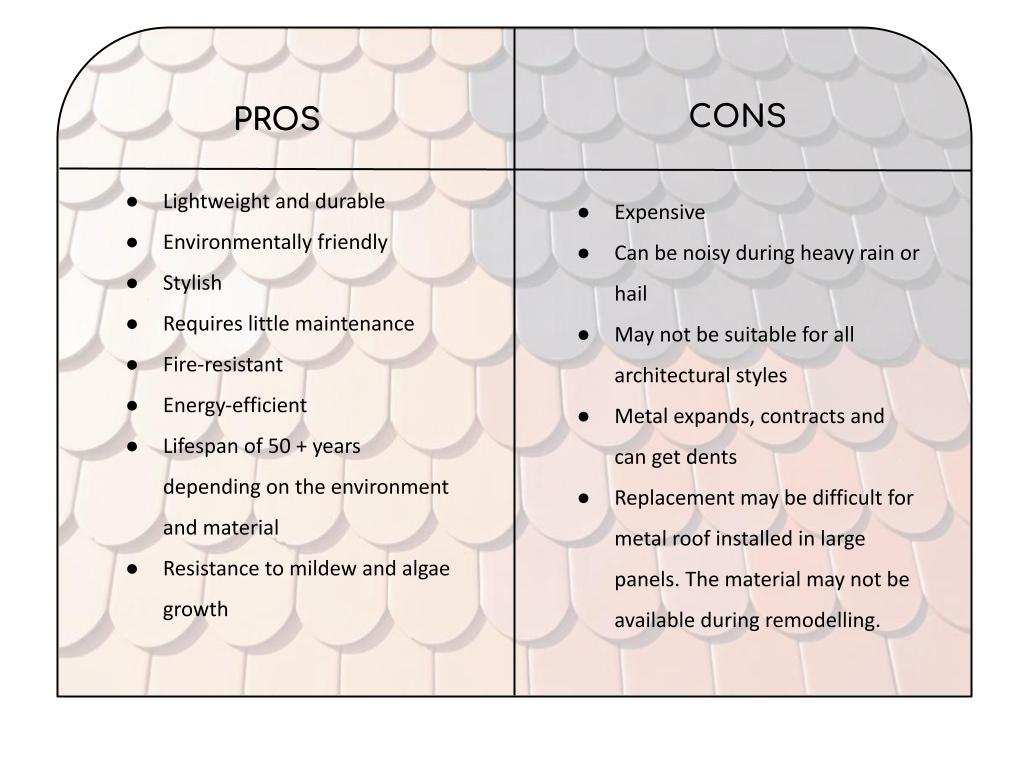
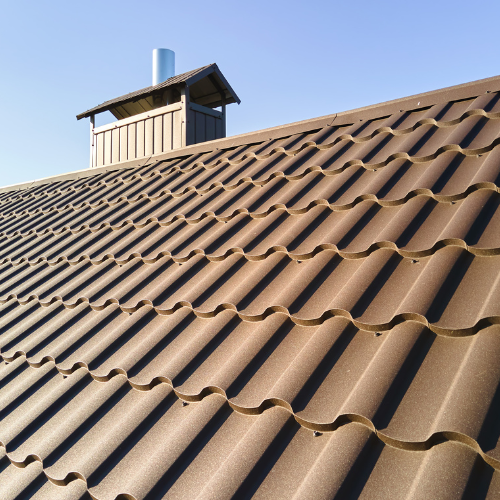
Slate Shingles
Slate shingles are made from a natural source called metamorphic rock that is mined mostly in Italy. They are known for their durability and longevity. Slate shingles are the oldest and one of the most beautiful types of roofing materials. Black and gray slate roof tile indicates high carbon content. Slate in colored hues is a result of high iron content. Let’s take a look at its pros and cons!
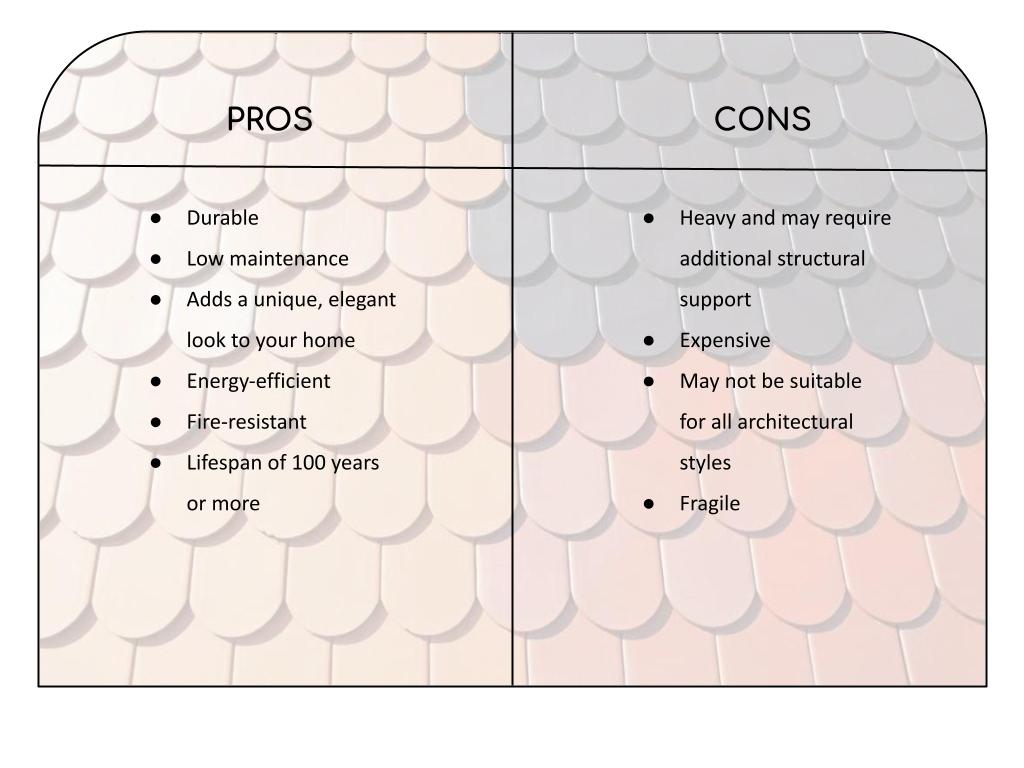
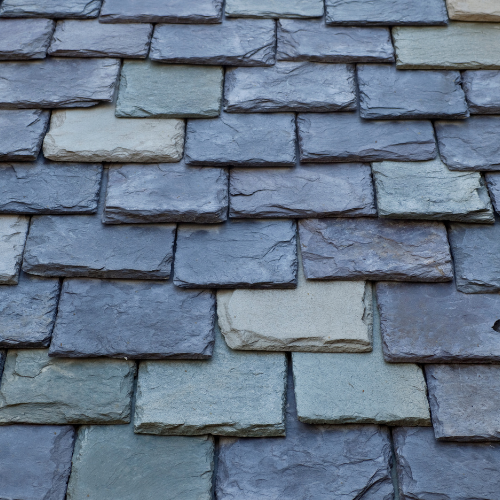
Tile Shingles
Tile shingles are made from clay, slate, or concrete. They hang in overlapping parallel rows to form a watertight seal.
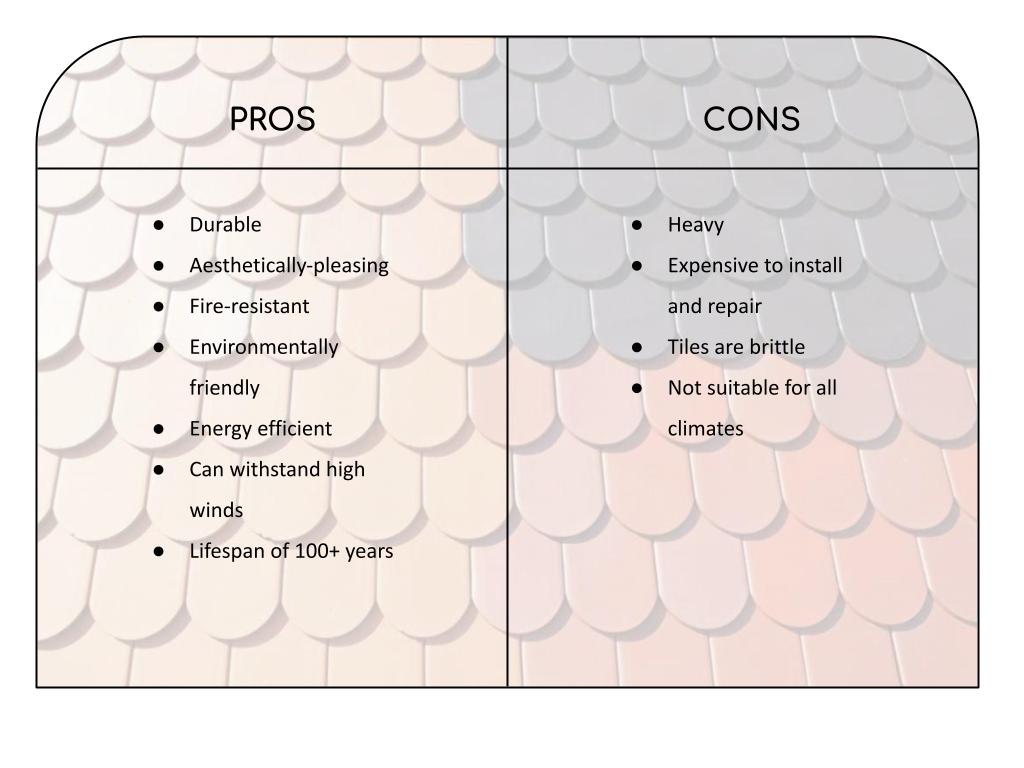
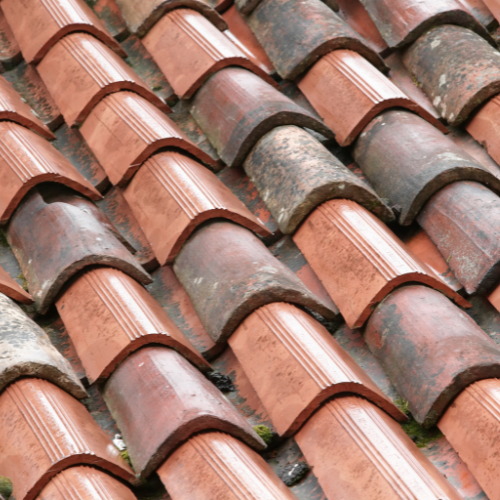
What’s On Your Roof?
The most common type of roof staining is due to the growth of algae called Gleocapsa Magma. If you see dark streaks or large patches of dark staining, it’s most likely from an infestation of this algae.
Other common issues with roofs include moss and lichen buildup, general dirt and debris, and bird droppings. The following cleaning processes will work for all of those issues and more.
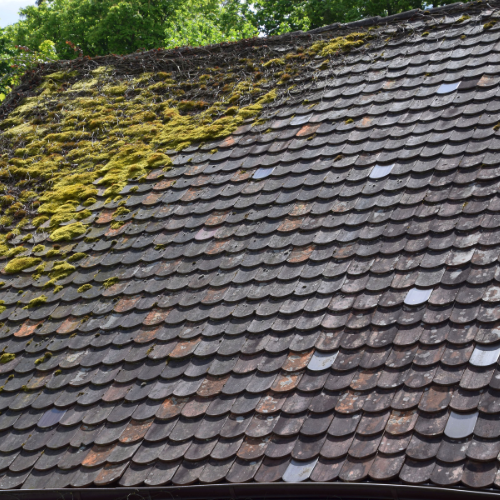
How to Clean Asphalt Shingles
Fortunately, asphalt shingles are relatively easy to clean and maintain. Here are some steps to follow when cleaning asphalt shingles:
- Safety first: Before starting, make sure to wear protective gear such as gloves, safety glasses, and slip-resistant shoes.
- Make sure that you can safely walk on your roof. If the slope is too steep or your home is 2 stories or more, it is advisable to hire a professional.
- Remove debris: Use a leaf blower or broom to remove any loose debris from the roof, such as leaves, branches, or twigs.
- Wet plants with plain water and cover them with plastic before treating your roof. Rinse them again after using the bleach solution on your roof.
- Apply cleaning solution: Mix a cleaning solution of one part household bleach and one part water in a pump sprayer. Spray the solution onto the roof, starting from the top and working your way down.
- Wait and rinse: Allow the solution to sit on the roof for about 15 minutes, then rinse it off with a garden hose or pressure washer.
- Repeat if necessary: If there are still stains or debris on the roof, repeat the cleaning process until the roof is clean.
- If heavy moss is lichen are present, it may be necessary to saturate them with the cleaning solution. When the growth turns orange or off-white in color, it’s dead. Note that it may take weeks or even months for the growth the decay and fall off the roof. Just be patient, it will happen.
- Prevent future stains: To prevent future stains, install zinc or copper strips near the roof's peak. These metals will release ions that prevent algae and moss growth.
How to Clean Wood Shingles
Wood shingles require more care and attention than other types of shingles. We generally recommend that you contact a wood roofing restoration specialist. However, if you are determined to tackle it on your own, here are some steps to follow when cleaning wood shingles:
- Safety first: Before starting, make sure to wear protective gear such as gloves, safety glasses, and slip-resistant shoes.
- Shingles may become brittle as they age. Hence, it may be difficult and unsafe to climb into and walk on the roof. Hiring experienced roof cleaning professionals is always highly recommended.
- Remove debris: Use a leaf blower or broom to remove any loose debris from the roof, such as leaves, branches, or twigs.
- Apply cleaning solution: Mix a cleaning solution of one part bleach and one part water in a pump sprayer. Spray the solution onto the roof, starting from the top and working your way down.
- Scrub gently: Use a soft-bristled brush to scrub the shingles gently.
- Rinse: Rinse the shingles thoroughly with a garden hose or pressure washer, using low pressure. Note that, depending on the buildup on the shingles, higher pressure may be necessary. It’s very dangerous to use a pressure washer on a roof, so fall protection and other safety measures are highly recommended.
- Prevent future stains: To prevent future stains, apply a wood preservative or sealer to the shingles every few years. These preservatives are often oil-based and can restore the wood’s natural ability to resist organic growth and rot.
How to Clean Metal Shingles
Metal shingles are relatively easy to clean and maintain. Here are some steps to follow when cleaning metal shingles:
- Safety first: Before starting, make sure to wear protective gear such as gloves, safety glasses, and slip-resistant shoes.
- A garden hose can remove most of the dirt with plain water. This is the safest option. Pressure washers are not recommended as too much pressure can dent the roof.
- Remove debris: Use a leaf blower or broom to remove any loose debris from the roof, such as leaves, branches, or twigs.
- Apply cleaning solution: Mix a cleaning solution of a quarter cup of detergent (mild dish soap) with a gallon of water. Apply the solution to your roof using a soft-bristled brush.
- Wait and rinse: Allow the solution to sit on the roof for about 10 minutes, then rinse it off with a garden hose.
- Repeat if necessary: If there are still stains or debris on the roof, repeat the cleaning process until the roof is clean.
- Note that if organic staining (mold, algae, mildew, etc.) is present, you may need to use the bleach solution described earlier. If so, do a test spot to ensure the metal roof’s coating won’t be affected negatively. It’s also important to cool down the surface with water before applying the cleaning detergent. This will help you avoid “flash drying” which can cause permanent cosmetic damage to the roof’s coating.
- Cleaning is recommended every 2-3 years.
How to Clean Slate Shingles
Slate shingles are delicate and require special care when cleaning. Here are some steps to follow when cleaning slate shingles:
- Safety first: Before starting, wear protective gear such as gloves, safety glasses, and slip-resistant shoes.
- Do not use harsh chemicals such as chlorine bleach as they may damage the slate. The use of a pressure washer may break the slates apart.
- Remove debris: Use a leaf blower or broom to remove loose debris from the roof, such as leaves, branches, or twigs.
- Apply cleaning solution: Mix a cleaning solution of one part bleach and one part water in a pump sprayer. Spray the solution onto the roof, starting from the top and working your way down.
- Allow the cleaning solution to dwell for 10-15 minutes. Reapply as needed, until you see the staining start to fade.
- Rinse gently: Rinse the shingles gently with a garden hose being careful not to damage the shingles.
Tips for Maintaining Your Roof Shingles
Regular maintenance is crucial when it comes to keeping your roof shingles in top condition. Here are some tips for maintaining your roof shingles:
- Inspect your roof regularly: Check your roof for any signs of damage or wear and tear, such as cracked or missing shingles, leaks, or mold growth.
- Trim trees: Trim any branches that may be touching or rubbing against your roof.
- Clean gutters: Clean your gutters regularly to prevent clogs and water damage.
- Remove debris: Use a leaf blower or broom to remove any debris from your roof.
- Hire a professional: Consider hiring a professional roofing contractor to inspect your roof and provide regular maintenance.
DIY Roof Cleaning vs. Professional Roof Cleaning
You may be tempted to clean your roof yourself to save money. However, there are several risks involved in DIY roof cleaning. Firstly, climbing onto your roof can be risky, especially if you're not experienced in working at heights. Secondly, using the wrong cleaning products or techniques can damage your roof's surface, leading to costly repairs. Thirdly, the cleaning solution described above is very powerful and has the potential to harm other plant life on your property, including your precious landscaping. If you don’t protect surrounding areas properly, you could do serious (or even permanent) damage to your plant life. Lastly, if you're not properly equipped to clean your roof, you can cause damage to your property or harm to yourself.
On the other hand, professional roof cleaning services are equipped with the right tools, equipment, and products to clean your roof safely and effectively. They are also adept at protecting the surrounding landscaping so that nothing desirable is damaged during the cleaning process. They are trained to work at heights and are insured, so you don't have to worry about any damage to your property or injuries.
Cleaning the roof of your Michigan home can be a time-consuming and physically demanding task, especially if you're not experienced in it. By hiring a professional, you can focus on other important tasks while they take care of your roof. Lastly, a professional roof cleaner can help extend the life of your roof by removing dirt, debris, and other contaminants that can cause damage over time.
How Often Should You Get Your Roof Cleaned?
The frequency of roof cleaning depends on several factors, such as the type of roof you have, the climate in your area, and the amount of shade your roof receives. Generally, it's recommended to get your roof cleaned as needed. In dryer and cooler climates, it may only be necessary every 5-7 years. However, if you live in an area with lots of trees or experience heavy rainfall or high humidity, you may need to get your roof cleaned more frequently- as often as every 2 to 3 years.
Factors That Affect the Cost of Professional Roof Cleaning
The cost of professional roof cleaning depends on several factors, such as the size and slope of your roof, the type of roof you have, and the extent of the cleaning required. Generally, the cost of roof cleaning starts at $450 or so and can go up dramatically based on the above factors.
The Process of Professional Roof Cleaning
The process of professional roof cleaning involves several steps. Firstly, the roof cleaner will inspect your roof to identify any potential issues, such as cracks or leaks. Next, they will protect the surrounding property, ensuring that all desirable plant life is safe from harm during the cleaning process. They will then use a low-pressure “soft washing” technique to apply a powerful cleaning agent. This detergent will terminate any organic growth present on the roof, while at the same time eliminating stains caused by that growth. You’ll be left with a roof that looks next to new!
Choosing the Right Professional for Roof Cleaning
When choosing a professional for roof cleaning, it's always important to do your research. Look for a reputable company with experience in roof cleaning. Check their reviews and ratings online, and ask for references from past clients. Ensure that they are properly licensed and insured, and that they use safe and environmentally friendly cleaning products. It’s also important to ask questions about their property protection practices. A sloppy job can result in significant harm to surrounding landscaping.
More Recommended Articles:
The Transformative Power of Power Washing
When it comes to rejuvenating the appearance of our living spaces, we often find ourselves searching for the most effective and efficient solutions. Whether it’s your Michigan home’s exterior, the weathered deck in your backyard, the grimy driveway, or the dingy patio, one remarkable method stands out in its ability to restore the sparkle and…
Snow Removal in Lake Orion, MI by Lake State Cleaning
Don’t let the snow slow you down. Keep your driveway clear and keep yourself and your family safe. Snow Removal services by professionals like Lake State Cleaning will ensure you get the best of winter. Talk to our experts today and get a quote. You deserve peace of mind this season. #snowremoval #snow #exteriorcleaning #lakestatecleaning…

